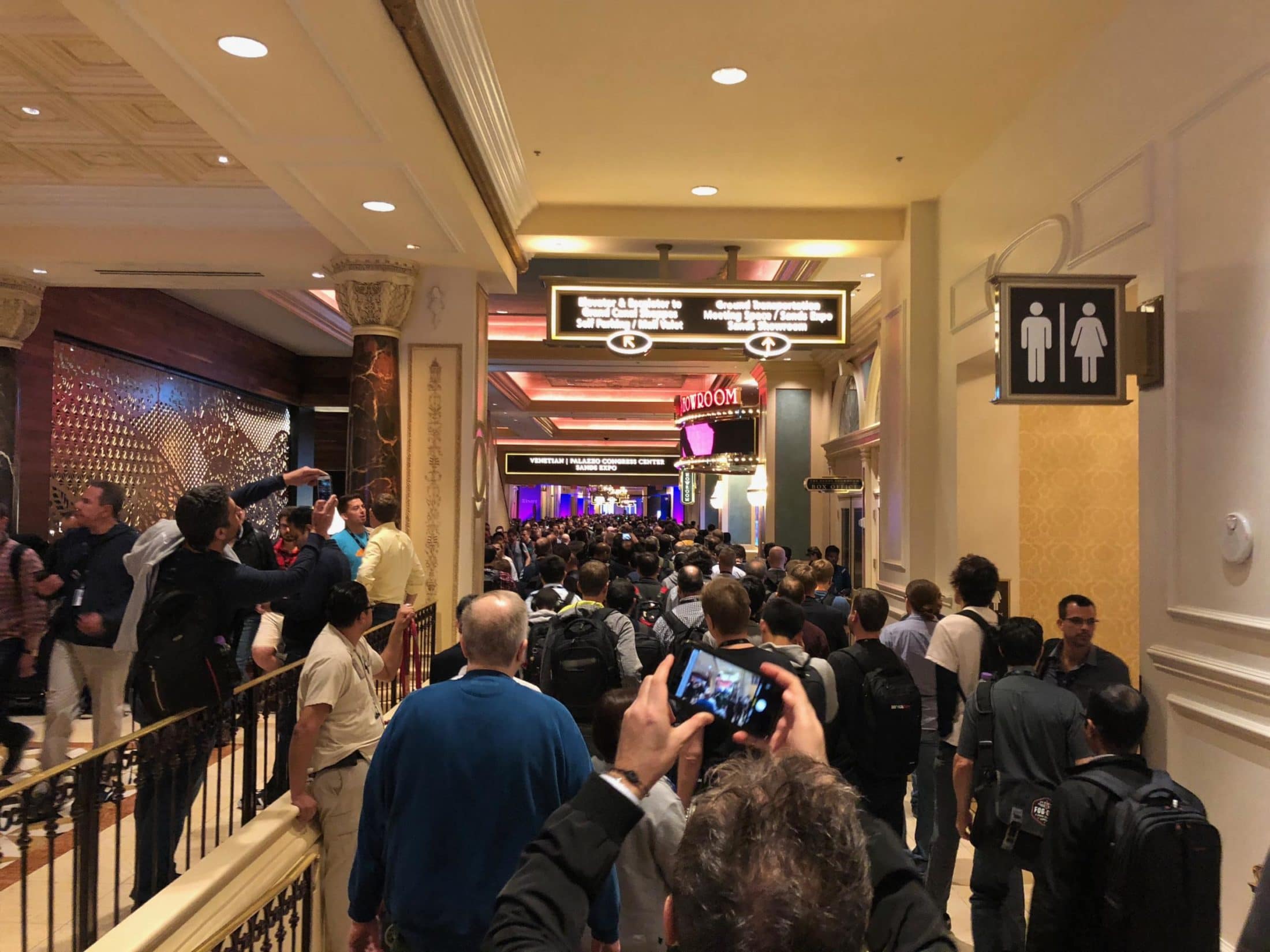
Today was a big day. Wednesday morning is usually the time for Andy Jassy (CEO of AWS) to give his keynote. This was the case this year also. The keynote was full of different announcements and it will be quite a task to go through all of them. I’ll leave some of them out and also include some announcements that weren’t in the keynote.
AI&ML
A huge chunk of the talk was about ML. Like Google has their TPU-processors to run ML models, AWS today announced Inferentia processors which should be available next year. Google has a head-start of several years so it is interesting to see how AWS’s offering can match Google’s. In addition to processors there were all kinds of enhancements so if ML is your thing you should definitely read the AWS blog posts about the new features. One thing I’m going to ”kehdata” (Sorry English speakers, ‘daring’ is a rough translation of the term, but in Gofore it holds much more meaning. Email me and I’ll explain the concept) is AWS DeepRacer. DeepRacer is radio-controlled car with atom-processor, video-camera, ROS OS and so on. Would definitely be fun way for people to practice ML and reinforcement learning.
DynamoDB on-demand
Traditionally DynamoDB tables must have had both read capacity and write capacity defined and performance was pretty static in a sense (assuming your data is modelled correctly and you know your access patterns). Then came autoscaling which automatically tunes read/write capacity values based on your traffic. And we have the option for on-demand billing. Based on the blog posts and documentation the on-demand option scales very well right from the start without the need to specify read/write capacity. The cost model is interesting and more closely matches for example Lambda’s model where you only pay for what you use. If your DynamoDB usage is spiky then on-demand might be a very good fit, whereas continuous, huge volume of traffic is much more cost-effective to run on traditional mode where you specify the performance limits yourself.
AWS Control Tower
For several years the best practice has been to distribute applications/services/teams into different AWS accounts and furthermore segregate development, testing and production into different accounts. Natural outcome from this is the fact that the number of AWS accounts in organizations has exploded. So far it has been pretty much DIY-solutions when trying to get overall vision of all your accounts. The bigger the organization, the more they feel pain from this.
Today AWS announced Control Tower which aims to alleviate some of these problems. Automating the set-up of a baseline environment, Control Tower uses existing services like Config, Cloudtrail, Lambda, Cloudwatch, etc. Read more about Control Tower from product page: https://aws.amazon.com/controltower/features/
As an AWS partner our company has a huge number of accounts, so for us Control Tower is a very welcome improvement. We are investigating what it exactly brings to table and where you might still need custom solutions. Stay tuned for more blog posts concentrating solely on Control Tower. Currently it is in preview, so signup and a bit of luck is needed to get early taste of it.
Amazon Timestream
Cloudwatch metrics isn’t exactly new. It has existed a long time and is de-facto solution for metrics collection from AWS services. In addition to Cloudwatch it is very common to see InfluxDB or Prometheus on our clients (usually combined with Grafana for visualization of time-series data).
Today AWS announced Amazon Timestream, a managed time-series database. Targeted solely for time-series data this puts Timestream into direct competition against Prometheus, InfluxDB or Riak TS or Timescale. Naturally this is excellent news if you don’t want to manage servers and want to have your time-series database as a service. No more EC2 instances running Prometheus, no more DIY solutions for HA and so on. AWS mantra has long been that let the ”undifferentiated heavy lifting” for them and concentrate on your application and business-logic. Timestream follows this idiom perfectly. Timestream is currently in preview so signup and a bit of luck is needed to test it.
Quantum ledger database
Quantum ledger database and managed blockchain. Well now we have all the buzzwords in one blog. AI/ML handled already and now it is time for blockchain. AWS announced to day two services loosely related to each other, both are currently in preview. Quantum ledger database is database with central trusted authority, immutable append only semantics with the complete history of all the changes ever made. What does it have to do with blockchain? Well, all the changes are chained and cryptographically verified. There is huge amount of use cases! In addition to quantum ledger database AWS also announced managed blockchain which supports Hyperledger Fabric and Ethereum (Hyperledger is first, Ethereum coming later).
CodeDeploy
There were other new features launched that might stay under the radar if the focus is only on the keynote. One that is very relevant for my current project is the CodeDeploy’s ability to do native blue/green deployments into ECS and Fargate. (more here: https://aws.amazon.com/blogs/devops/use-aws-codedeploy-to-implement-blue-green-deployments-for-aws-fargate-and-amazon-ecs/)
This will definitely be tested out next week.
AWS App Mesh
Also one more nice announcement was AWS App Mesh. Envoy-proxy based service-mesh for EKS, ECS and K8s running on EC2. Like other service meshes the idea is that applications or micro-services do not need to have in-built functionality for service discovery (and possible load-balancing or circuit breaking). Service mesh takes care of it and applications are simpler to implement. App Mesh is in preview but more information can be found on Github: https://github.com/awslabs/aws-app-mesh-examples
Like I said this is not definite list of all the new changes. There are literally tons of new things! Let’s see if Andy left any announcements for Werner tomorrow (hopefully so).





